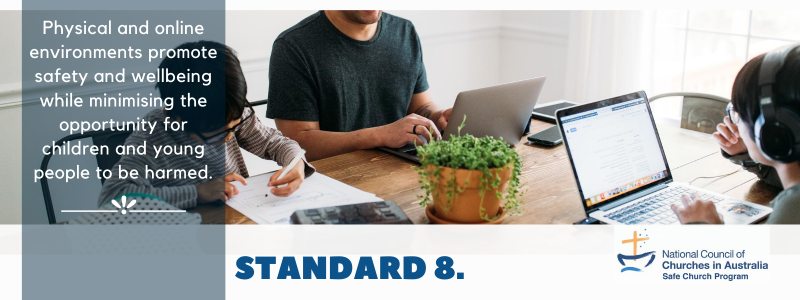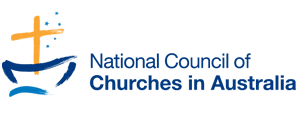SAFE CHURCH PROGRAM NATIONAL CHILD SAFETY FRAMEWORK
|
“Certain physical and online environments can pose a risk to children. Institutions seeking to be child safe could improve safety by analysing and addressing these risks, reducing opportunities for harm and increasing the likelihood that perpetrators would be caught. A child safe institution designs and adapts its physical environment to minimise opportunities for abuse to occur. The institution finds a balance between visibility and children’s privacy and their capacity to engage in creative play and other activities. It consults children about physical environments and what makes them feel safe. Child safe institutions address the potential risks posed in an online environment, educating children and adults about how to avoid harm and how to detect signs of online grooming. The institution articulates clear boundaries for online conduct, and monitors and responds to any breaches of these policies.” (Royal Commission, 2017) |
![]()
Churches of Christ Victoria and Tasmania
eSafety Commissioner
- https://www.esafety.gov.au/report
- https://www.esafety.gov.au/key-issues
- https://www.esafety.gov.au/key-issues/esafety-guide
![]()
Uniting Church in Australia
![]()
Uniting Church in Australia
NCCA Safe Church Program, Catholic Professional Standards and the eSafety Commissioner
This video is a recording of a webinar hosted by Catholic Professional Standards Ltd (CPSL) and the National Council of Churches, Safe Church Program (NCCA), recorded on May 22 2020. This webinar was originally produced as a training resource intended to assist those in faith contexts in Australia to gain a greater understanding of how to identify, interrupt and report grooming in the online environment. CPSL and NCCA would like to thank the Office of the eSafety Commissioner for their participation in this webinar.
NCCA framework
Child Wise resources developed for the NCCA Safe Church Program Framework
- Risk Assessment - PDF
![]()
Other Resources
Catholic Professional Standards Limited
- https://www.cpsltd.org.au/safe-church/national-catholic-safeguarding-standards/standard-eight/
- https://www.cpsltd.org.au/media/1429/ncss-standard-8-implementation-guide-edition-1-2019.pdf
eSafety Cyber Report Team
The eSafety Cyber Report team responds to reports from the public and law enforcement about prohibited online content and works with international partners to get online child sexual abuse material taken down. This role is quite distinct from that of law enforcement, although complementary to it. While the safety commissioner works with law enforcement partners, they don’t hunt offenders and we don’t work to identify victims they leave that specifically to our national police forces, and their international counterparts through INTERPOL.
As part of this 2020’s ANZPAA Police Conference, eSafety Commissioner Julie Inman Grant delivered a virtual presentation which explained in detail how eSafety and law enforcement work together for a safer internet. You can watch that here:
- https://vimeo.com/403163340
- https://www.esafety.gov.au/about-us/blog/keeping-our-kids-safe-hidden-dangers-online
The principles presented are sound and consistent with the global effort for greater corporate responsibility and accountability in preventing the online distribution of Child Sexual Exploitation.
We Protect Global Alliance Strategic response
INHOPE is a collection of international hotlines that takes reports of online child abuse material and acts to have the content removed from the server where it is being hosted. Not all countries have a hotline, and each hotline operates under different legislation and interacts with their domestic law enforcement agencies in their own way.
A host of nations work well in sharing information and intelligence in this area. INTERPOL maintains a CSE database to help victim identification.
| Australian Catholic University - Institute of Child Protection Studies | ||
| Physical and online environments promote safety and well-being while minimising the opportunity for children and young people to be harmed. | ||
| Principles and Indicators | ICPS Resource | |
|
8.1 Staff and volunteers identify and mitigate risks in the online and physical environments without compromising a child’s/ young person’s right to privacy, access to information, social connections and learning opportunities |
Paper: Child maltreatment in organisations: Risk factors and strategies for prevention
|
|
|
8.2 The online environment is used in accordance with the church’s Code of Conduct and child safety and wellbeing policy and practices |
||
|
8.3 Risk management plans consider risks posed by church settings, activities, and the physical environment |
||
|
8.4 Churches that contract facilities and services from third parties have procurement policies that ensure the safety of children and young people. |
||
|
|
|
|
|
|
|
|
|
|













